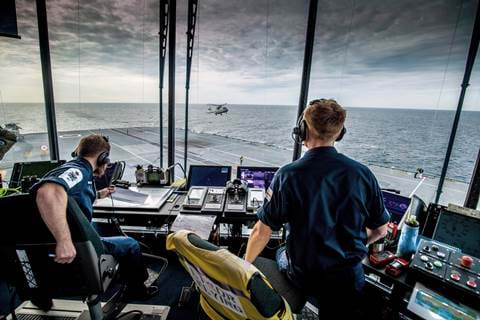ATC, it's as easy as 1,2,3
“Roads? Where we’re going, we don’t need roads!”

With no traffic lights, signage or road markings, Air Traffic Management is a must. With a raft of specialist skills, Air Traffic Controllers need clear communication, critical thinking abilities and problem-solving skills to guide pilots, their planes and passengers from taxi to take-off, through the air and then safely back on the ground. Imagine having to do this in the middle of the Atlantic Ocean; darkness for miles around you, freezing cold temperatures and deep ocean currents pounding your vessel. The last thing you want is to be faced with an Air Traffic Control (ATC) system that is difficult to use, incompatible with other ships and air bases and not up to date with its mapping. Not anymore. When it comes to ATC, Chelton sets the bar which others face a difficult climb to reach.

Using our inherent knowledge and foothold in military air traffic management, Chelton’s RDSFleet has been meticulously designed to work within the complex navel environment using the same features and regulations as air traffic control on land. This hybrid of traffic control is the first of its kind in the world and has been selected for use on the Queen Elizabeth Class aircraft carrier fleet – the world’s most advanced aircraft carrier. With advanced safety net processing, the RDSFleet takes Air Traffic Safety to a whole new level; providing controllers with an assortment of alerts on Short Term Conflicts, Minimum Safe Altitude and Area Proximity.
Only the best for the best, why was Chelton chosen to supply ATC to the Queen Elizabeth Class Aircraft Carrier?
By far the most prominent characteristic of the RDSFleet is that it has an identical working environment to shore-based stations already using the system. Of course the capabilities differ on and off shore but the displays will remain the same.
Naval officers wake up in a different part of the world every morning, so it’s important they have the correct airspace on display. The RDSFleet enables the same capability as shore-based systems; the worldwide Digital Aeronautical Flight Information File (DAFIF) data is re-issued and maintained on a monthly basis by the MOD ensuring air traffic controllers, wherever they are, have the latest global mapping data in front of them.
The RDSFleet is highly adaptable to these different needs and can be configured to support various take-off and landing options including Catapult Assisted Take-Off But Arrested Recovery (CATOBAR), short take-off and vertical landing (STOVL) and Helicopter Platforms.
Traditionally, ship-to-shore and ground-to-air communications have been through separate systems but now Air Traffic Controllers can talk to anyone, anywhere through the same system. An identical display and user experience will also reduce the training requirements.
Great Scott!
With the unpredictability of the ocean, you may imagine that equipment can suffer in this environment. Not the RDSFleet. The RDS1600 alone has recorded an impressive 84 million operational hours without a single interruption in service – that’s 95 centuries! In the year 11,521, when flying cars will be a reality not a dream, Chelton will last the test of time with its Air Traffic Control System.
Your quote basket is currently empty
 Please select the type of quote you require for this product:
Please select the type of quote you require for this product: